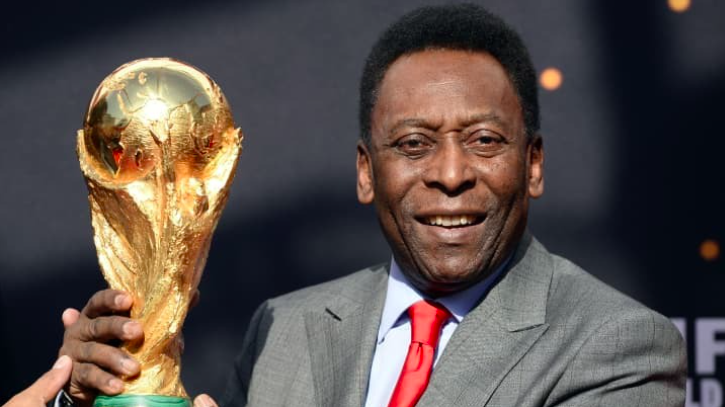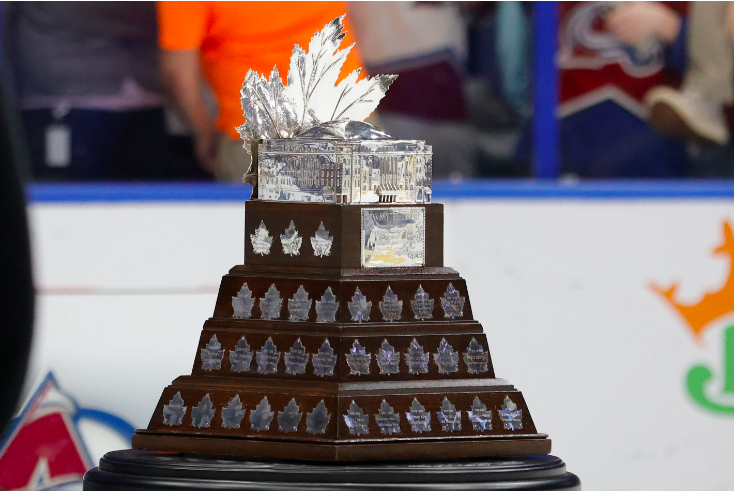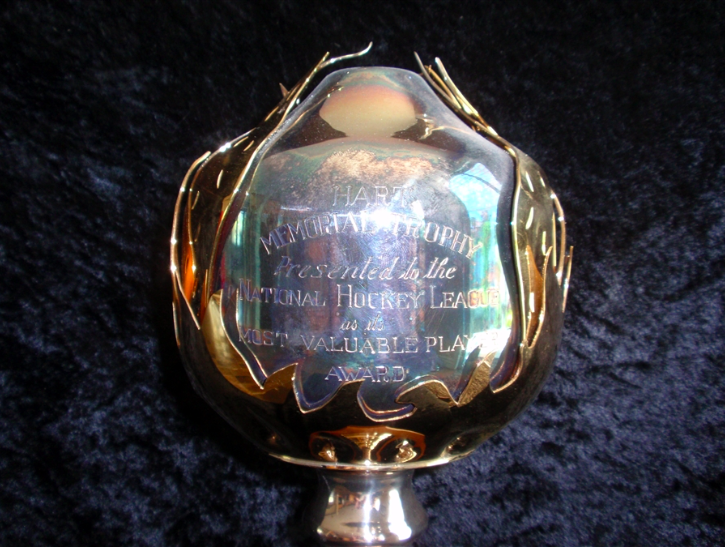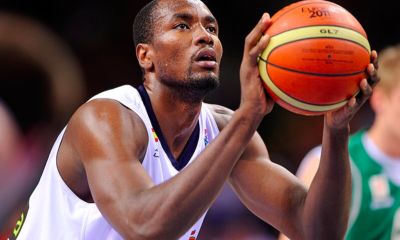Sports
Pele: The Legendary Journey of Football’s Greatest Icon | The Immortal King of Football

Pele: The Legendary Journey of Football’s Greatest Icon | The Immortal King of Football
Pele, often hailed as the greatest footballer of all time, left an indelible mark on the world of football. Known for his incredible skill, agility, and goal-scoring prowess, Pele’s legacy transcends generations. In this comprehensive article, we delve into the life and career of the football legend, exploring his remarkable achievements, the impact he made on the sport, and why he remains a global icon.
Early Life and Beginnings
Humble Origins
Edson Arantes do Nascimento, known as Pele, was born on October 23, 1940, in Três Corações, Brazil. Growing up in poverty, Pele’s passion for football emerged at a young age. Despite financial challenges, his determination and talent shone through.
The Birth of a Legend
Pele’s journey to greatness began with local club Bauru Athletic Club. His exceptional performance caught the eye of scouts, leading to his move to Santos FC at the age of 15. This transition marked the start of an extraordinary career.
Rise to Stardom
Santos FC and National Team Debut
Pele’s debut for Santos FC was nothing short of spectacular. He quickly became the team’s star player, leading them to numerous victories. At just 16, Pele made his debut for the Brazil national team, showcasing his talent on the international stage.
1958 FIFA World Cup
At 17, Pele’s performance in the 1958 FIFA World Cup was legendary. His hat-trick against France in the semi-finals and two goals in the final against Sweden secured Brazil’s first World Cup victory. This triumph catapulted Pele to global fame.
Pele’s Playing Style and Skills
The Complete Forward
Pele was the epitome of a complete forward. His exceptional dribbling, precise passing, and powerful shots made him a formidable opponent. Pele’s ability to read the game and create opportunities set him apart.
Unmatched Agility and Speed
Pele’s agility and speed were unparalleled. He could navigate through defenders with ease, making him a constant threat in the penalty area. His quick reflexes and sharp instincts contributed to his goal-scoring prowess.
Achievements and Records
Three-Time World Cup Champion
Pele’s most notable achievement is winning three FIFA World Cups (1958, 1962, 1970). This feat remains unmatched, solidifying his status as a football legend. Each tournament showcased his extraordinary skill and leadership.
Over 1,000 Career Goals
Pele’s goal-scoring record is awe-inspiring. He scored over 1,000 goals in official matches, a testament to his consistency and dominance on the field. His ability to find the back of the net in various competitions is a hallmark of his career.
Impact on Football
Global Ambassador of the Sport
Pele’s influence extended beyond the pitch. He became a global ambassador for football, promoting the sport’s values and inspiring young players worldwide. His charisma and sportsmanship made him a beloved figure.
Pele’s Influence on Modern Football
Modern football owes much to Pele’s legacy. His playing style, sportsmanship, and contributions to football’s global growth set a precedent for future generations. Players like Cristiano Ronaldo and Lionel Messi have cited Pele as an inspiration.
Life Beyond Football
Philanthropy and Advocacy
After retiring, Pele dedicated himself to philanthropy and advocacy. He supported numerous charitable initiatives, focusing on education, health, and social justice. His efforts to give back to society have left a lasting impact.
Cultural Icon and Media Presence
Pele’s charisma and charm extended to the media. He appeared in films, television shows, and commercials, further cementing his status as a cultural icon. His autobiography and biographical films offer insights into his life and career.
Pele’s Legacy
Honors and Awards
Pele’s contributions to football have been recognized with countless honors and awards. He was named FIFA Player of the Century, alongside Diego Maradona, and received the International Peace Award for his humanitarian work.
Continued Relevance
Pele’s legacy continues to resonate in the football world. His influence on the sport, his remarkable achievements, and his dedication to promoting football’s values ensure that he remains a revered figure.
Conclusion
Pele’s journey from humble beginnings to global stardom is a testament to his extraordinary talent, determination, and passion for football. His unparalleled achievements, both on and off the pitch, have left an indelible mark on the sport. As we celebrate Pele’s legacy, we are reminded of the profound impact he has had on football and the world.
Frequently Asked Questions (FAQs)
What is Pele’s full name?
Pele’s full name is Edson Arantes do Nascimento.
How many goals did Pele score in his career?
Pele scored over 1,000 goals in official matches during his career, a record that underscores his goal-scoring prowess.
What makes Pele a football legend?
Pele’s exceptional skill, agility, and goal-scoring ability, combined with his three FIFA World Cup victories and numerous individual awards, make him a football legend.
How did Pele contribute to football after retiring?
After retiring, Pele became a global ambassador for football, supported various charitable initiatives, and appeared in media, promoting the sport’s values and inspiring future generations.
What honors and awards has Pele received?
Pele has received numerous honors, including FIFA Player of the Century, International Peace Award, and many more, recognizing his contributions to football and society.
How did Pele influence modern football?
Pele’s playing style, sportsmanship, and contributions to football’s global growth set a precedent for future generations. His legacy continues to inspire players and fans worldwide.
How many FIFA World Cups did Pele win?
Pele won three FIFA World Cups with Brazil in 1958, 1962, and 1970.
Where did Pele play club football?
Pele played the majority of his club football for Santos FC in Brazil and had a brief stint with the New York Cosmos in the United States.
What is Pele’s post-football career like?
After retiring from professional football, Pele has been involved in various charitable endeavors and has served as a goodwill ambassador for UNICEF and other organizations.
This biography of Pele provides a comprehensive overview of his life, career, and impact on the world of football. Pele’s legacy as one of the greatest footballers of all time is undeniable, and his story serves as an inspiration to football fans and aspiring players around the world.
Sports
The NHL Conn Smythe Trophy: Celebrating Playoff MVPs in Ice Hockey

The NHL Conn Smythe Trophy: Celebrating Playoff MVPs in Ice Hockey
The NHL Conn Smythe Trophy is one of the most prestigious awards in ice hockey, given annually to the player judged to be the most valuable to their team during the NHL playoffs. Named after the former owner, general manager, and coach of the Toronto Maple Leafs, Conn Smythe, this award symbolizes excellence and clutch performance when it matters the most. Let’s dive into the rich history, notable winners, and the impact of the Conn Smythe Trophy on the sport of hockey.
The History and Origins of the Conn Smythe Trophy
Inception of the Trophy
The Conn Smythe Trophy was introduced in 1965, designed to honor the most valuable player (MVP) in the Stanley Cup playoffs. Unlike other awards that consider regular-season performance, the Conn Smythe focuses solely on playoff contributions.
Significance of Conn Smythe
Conn Smythe was a towering figure in the world of hockey. As the driving force behind the Toronto Maple Leafs, his legacy is remembered through this trophy. Smythe’s influence on the game, from his strategic innovations to his leadership, makes this award a fitting tribute to his contributions.
Criteria for Awarding the Conn Smythe Trophy
Playoff Performance
The primary criterion for the Conn Smythe Trophy is the player’s performance during the playoffs. This includes scoring, defensive play, leadership, and overall impact on the game.
Voting Process
Members of the Professional Hockey Writers’ Association (PHWA) vote to determine the winner of the Conn Smythe Trophy. Voting takes place immediately after the final game of the Stanley Cup Finals, ensuring that the entire playoff performance is considered.
Notable Conn Smythe Trophy Winners

Bobby Orr: A Legend in Defense
Bobby Orr, the legendary defenseman, was the first player to win the Conn Smythe Trophy twice. His remarkable skill and leadership helped the Boston Bruins secure Stanley Cup victories in 1970 and 1972.
Patrick Roy: Master of the Crease
Patrick Roy stands out as the only player to win the Conn Smythe Trophy three times, each with a different team. His goaltending prowess and ability to perform under pressure make him a true icon in hockey history.
Sidney Crosby: Modern-Day Maestro
Sidney Crosby, with two Conn Smythe Trophies to his name, exemplifies the blend of skill, determination, and leadership that defines a playoff MVP. His contributions to the Pittsburgh Penguins’ success have solidified his place among the greats.
Impact of the Conn Smythe Trophy on Players’ Careers
Elevating Status and Legacy
Winning the Conn Smythe Trophy elevates a player’s status within the league and cements their legacy. It is a testament to their ability to perform when it matters most and often leads to greater recognition and endorsement opportunities.
Team Dynamics
The Conn Smythe Trophy highlights the importance of individual contributions to team success. Players who win this award are often seen as leaders and pivotal figures within their teams, influencing team dynamics and future strategies.
Memorable Moments in Conn Smythe Trophy History
Jean-Sébastien Giguère’s Heroics
In 2003, Jean-Sébastien Giguère became the fifth player to win the Conn Smythe Trophy despite his team, the Anaheim Ducks, losing in the Finals. His outstanding goaltending throughout the playoffs left an indelible mark on the hockey world.
Jonathan Toews’ Leadership
Jonathan Toews’ Conn Smythe win in 2010 showcased his leadership and clutch performances. His ability to elevate his game during critical moments was instrumental in the Chicago Blackhawks’ Stanley Cup victory.
Comparing the Conn Smythe Trophy with Other NHL Awards
Hart Memorial Trophy vs. Conn Smythe Trophy
While the Hart Memorial Trophy is awarded to the regular season’s most valuable player, the Conn Smythe Trophy focuses exclusively on playoff performance. This distinction highlights the unique value of excelling under playoff pressure.
Ted Lindsay Award vs. Conn Smythe Trophy
The Ted Lindsay Award, voted on by the players, recognizes the most outstanding player in the regular season. In contrast, the Conn Smythe Trophy is determined by the media and focuses on the playoffs, offering different perspectives on player excellence.
The Legacy and Future of the Conn Smythe Trophy
Evolving Game Dynamics
As the NHL evolves, so do the attributes valued in Conn Smythe winners. The increasing speed and skill in the game mean that future winners will likely showcase a diverse range of talents, from scoring to defensive acumen.
Rising Stars
Emerging talents like Connor McDavid and Nathan MacKinnon are poised to leave their mark on the playoffs. Their potential to win the Conn Smythe Trophy reflects the ongoing evolution of hockey and the rise of new superstars.
Conclusion
The NHL Conn Smythe Trophy is more than just an award; it is a symbol of playoff excellence and a testament to the players who rise to the occasion when it matters most. From its inception to its notable winners, the Conn Smythe Trophy captures the essence of what it means to be the most valuable player in the most crucial moments of the game. As we look to the future, this prestigious award will continue to celebrate the best in hockey, honoring those who make the greatest impact in the playoffs.
Frequently Asked Questions (FAQs)
Who was the first winner of the Conn Smythe Trophy?
The first winner of the Conn Smythe Trophy was Jean Béliveau of the Montreal Canadiens in 1965.
How many times has Patrick Roy won the Conn Smythe Trophy?
Patrick Roy has won the Conn Smythe Trophy three times, the most by any player, in 1986, 1993, and 2001.
Can a player from the losing team win the Conn Smythe Trophy?
Yes, players from the losing team can win the Conn Smythe Trophy. Notable examples include Jean-Sébastien Giguère in 2003 and Roger Crozier in 1966.
How is the winner of the Conn Smythe Trophy chosen?
The winner of the Conn Smythe Trophy is chosen by a vote from the Professional Hockey Writers’ Association members after the conclusion of the Stanley Cup Finals.
Has a rookie ever won the Conn Smythe Trophy?
Yes, Patrick Roy won the Conn Smythe Trophy as a rookie in 1986, leading the Montreal Canadiens to a Stanley Cup victory with his stellar goaltending.
Sports
The NHL Hart Memorial Trophy: A Deep Dive into Hockey’s Most Prestigious Award

The NHL Hart Memorial Trophy: A Deep Dive into Hockey’s Most Prestigious Award
The NHL Hart Memorial Trophy stands as a testament to excellence in ice hockey, awarded annually to the player judged to be the most valuable to his team. This accolade, named after Dr. David Hart, has a storied history and significant impact on the sport. Let’s explore the origins, criteria, notable winners, and the profound legacy of the Hart Trophy.
The Origins of the Hart Memorial Trophy
Early Beginnings
The Hart Memorial Trophy was first awarded in 1924. Dr. David Hart, the father of Montreal Canadiens coach Cecil Hart, donated the original trophy. It was created to honor the player deemed most valuable to their team, a concept that has become integral to the NHL’s recognition of individual excellence.
Evolution Over the Decades
Initially, the award was based on votes from the NHL coaches. Over time, the voting process evolved to include members of the Professional Hockey Writers’ Association (PHWA), ensuring a broader and more diverse perspective in determining the winner.
Criteria for Winning the Hart Memorial Trophy
Judging Value
The Hart Trophy is unique because it focuses on a player’s value to their team rather than simply their statistical performance. This means the winner often comes from a team that has significantly benefited from their contributions, even if that team doesn’t necessarily top the standings.
Voting Process
The PHWA members cast their votes at the end of the regular season. Each voter selects their top five candidates, and points are awarded based on these rankings. The player with the highest total points is awarded the trophy.
Notable Hart Trophy Winners
Wayne Gretzky: The Great One
Wayne Gretzky’s name is synonymous with the Hart Trophy, having won it a record nine times during his illustrious career. His dominance in the 1980s with the Edmonton Oilers is a benchmark of individual excellence in the NHL.
Gordie Howe: Mr. Hockey
Gordie Howe, with six Hart Trophies to his name, exemplified longevity and consistency. His ability to perform at a high level across multiple decades made him a legend in the sport.
Recent Winners
Recent winners such as Connor McDavid and Leon Draisaitl have brought new excitement to the NHL, showcasing the blend of speed, skill, and strategic thinking that defines modern hockey.
Impact of the Hart Trophy on Careers
Boost in Recognition
Winning the Hart Trophy often elevates a player’s status in the league, leading to increased endorsement opportunities and a lasting legacy. It’s a recognition that cements a player’s place among the all-time greats.
Team Influence
The trophy also highlights the importance of individual contributions to a team’s success. Players who win the Hart are seen as pivotal to their team’s performance, often leading to leadership roles and increased responsibilities.
Controversies and Debates
Subjectivity of Value
Given the subjective nature of “value,” debates often arise about whether the right player was chosen. Factors like team success, statistical dominance, and overall influence can lead to differing opinions among fans and analysts.
Close Contests
There have been numerous instances where the voting was exceptionally close, leading to heated discussions about the merits of each candidate. These debates underscore the passion and engagement of the hockey community.
The Legacy of the Hart Memorial Trophy
Influence on the Game
The Hart Trophy has a profound impact on how players approach the game, knowing that their individual efforts could be recognized with such a prestigious award. It fosters a competitive spirit and drives players to excel.
Historical Significance
As the NHL continues to grow, the Hart Trophy remains a symbol of excellence and achievement. It connects the current generation of players with the legends of the past, preserving the rich history of the sport.
Memorable Hart Trophy Moments
Ovechkin’s Triple Crown
Alex Ovechkin’s third Hart Trophy in 2013 highlighted his scoring prowess and leadership, solidifying his place as one of the greatest goal scorers in NHL history.
Carey Price’s Historic Win
In 2015, Carey Price became the first goaltender to win the Hart Trophy in over a decade, showcasing the significant impact a stellar goaltending season can have on a team’s success.
Comparing the Hart Trophy with Other NHL Awards
The Art Ross Trophy
While the Art Ross Trophy is awarded to the league’s top scorer, the Hart Trophy takes a broader view, considering overall contributions and value. This distinction makes the Hart Trophy unique and highly coveted.
The Ted Lindsay Award
The Ted Lindsay Award, voted by the players, is often seen as a companion to the Hart Trophy. It provides a player’s perspective on who the most outstanding player is, offering another layer of recognition.
The Future of the Hart Memorial Trophy
Emerging Stars
As the NHL continues to evolve, new stars like Auston Matthews and Jack Hughes are emerging as potential Hart Trophy candidates. Their impact on the game ensures the future of the Hart Trophy remains bright.
Changing Dynamics
With the game becoming faster and more skilled, the criteria for winning the Hart Trophy may continue to adapt. Players who excel in multiple facets of the game will likely be at the forefront of future considerations.
Conclusion
The NHL Hart Memorial Trophy represents the pinnacle of individual achievement in hockey. Its rich history, the legends who have won it, and its impact on the game make it a cornerstone of NHL culture. As we look to the future, the Hart Trophy will undoubtedly continue to honor those who exemplify the best in hockey, celebrating the players who make the greatest impact on their teams and the sport.
Frequently Asked Questions (FAQs)
How many times has Wayne Gretzky won the Hart Trophy?
Wayne Gretzky has won the Hart Trophy a record nine times, showcasing his dominance in the NHL during his career.
Who was the first player to win the Hart Memorial Trophy?
The first recipient of the Hart Memorial Trophy was Frank Nighbor of the Ottawa Senators in 1924.
How is the Hart Trophy winner determined?
The Hart Trophy winner is determined by votes from members of the Professional Hockey Writers’ Association, who rank their top five candidates at the end of the regular season.
Has a goaltender ever won the Hart Trophy?
Yes, several goaltenders have won the Hart Trophy, including Carey Price in 2015 and Dominik Hasek, who won it twice in the 1990s.
What distinguishes the Hart Trophy from the Ted Lindsay Award?
While the Hart Trophy is awarded based on votes from sportswriters, the Ted Lindsay Award is voted on by the players themselves, recognizing the most outstanding player in the NHL from their perspective.
Sports
Ice Hockey: A Comprehensive Guide to the Fastest Game on Ice

Ice Hockey: A Comprehensive Guide to the Fastest Game on Ice
Ice hockey, a thrilling and dynamic sport, captures the hearts of millions worldwide. Known for its speed, skill, and intensity, this game is played on ice and requires players to navigate a puck into the opponent’s goal using sticks. Let’s delve deep into the world of ice hockey, exploring its history, rules, equipment, strategies, and the key elements that make it one of the most exciting sports.
The History of Ice Hockey
Origins and Early Development
Ice hockey’s roots trace back to various stick-and-ball games played in Europe centuries ago. However, it was in Canada during the 19th century that the modern version of the game began to take shape. The first organized indoor hockey game took place in Montreal on March 3, 1875, a landmark event that set the stage for the sport’s evolution.
The Birth of Professional Ice Hockey
Professional ice hockey emerged in the early 20th century with the formation of leagues such as the National Hockey Association (NHA) and later, the National Hockey League (NHL) in 1917. The NHL has since become the premier professional ice hockey league globally, featuring teams from both the United States and Canada.
The Fundamentals of Ice Hockey
The Playing Surface
Ice hockey is played on a rectangular rink with rounded corners. The rink measures 200 feet by 85 feet in the NHL, with slightly larger dimensions in international play. The surface is divided into three zones: the defensive zone, the neutral zone, and the offensive zone.
Basic Rules and Objectives
The primary objective of ice hockey is to score more goals than the opposing team. Each team has six players on the ice, including a goaltender. The game consists of three 20-minute periods, with intermissions in between.
Key rules include:
- Offside: Players must not enter the offensive zone ahead of the puck.
- Icing: Shooting the puck from behind the center line past the opponent’s goal line without it being touched.
- Penalties: Infractions such as tripping, hooking, and slashing result in time in the penalty box.
Essential Equipment
Skates and Sticks
Players wear specialized ice hockey skates designed for agility and speed. Sticks are made of composite materials or wood, featuring a curved blade for better puck control.
Protective Gear
Safety is paramount in ice hockey. Players don helmets, shoulder pads, elbow pads, gloves, shin guards, and mouthguards. Goaltenders wear additional protective gear, including leg pads, chest protectors, and masks.
The Puck
The puck is a hard rubber disc, measuring three inches in diameter and one inch thick. It is frozen before games to reduce bouncing on the ice.
Game Strategies and Tactics
Offensive Strategies
Effective offensive play in ice hockey involves various strategies to outmaneuver the defense and create scoring opportunities. Common tactics include:
- Forechecking: Pressuring the opponent in their defensive zone to regain possession.
- Cycling: Moving the puck along the boards in the offensive zone to tire out defenders.
- Power Play: Capitalizing on a numerical advantage when the opposing team has a player in the penalty box.
Defensive Strategies
Defensive play aims to prevent the opposing team from scoring. Key strategies include:
- Backchecking: Forwards helping defend by skating back to their zone.
- Penalty Killing: Successfully defending while a player is in the penalty box.
- Shot Blocking: Defenders sacrificing their bodies to block shots on goal.
The Role of the Goaltender
Goaltending Techniques
Goaltenders, or goalies, play a crucial role in ice hockey. Their primary responsibility is to stop the puck from entering the net. Techniques include:
- Butterfly Style: Dropping to the knees to cover the lower part of the net.
- Stand-up Style: Remaining upright to block high shots.
- Hybrid Style: Combining elements of both butterfly and stand-up styles.
Famous Goaltenders
Legendary goaltenders such as Patrick Roy, Martin Brodeur, and Dominik Hasek have left an indelible mark on the game, showcasing extraordinary skill and athleticism.
The Culture of Ice Hockey
Fan Engagement and Traditions
Ice hockey boasts a passionate fan base, with traditions such as the playoff beard and the throwing of hats for hat-trick performances. Fans are known for their unwavering support and enthusiasm.
International Competitions
Ice hockey is a global sport, with prestigious tournaments such as the Winter Olympics, the IIHF World Championship, and the World Junior Championship highlighting international talent.
Ice Hockey Leagues and Teams
The NHL
The NHL, with 32 teams, is the pinnacle of professional ice hockey. Teams like the Montreal Canadiens, Toronto Maple Leafs, and Chicago Blackhawks have rich histories and loyal fan bases.
Other Prominent Leagues
Other notable leagues include the Kontinental Hockey League (KHL) in Russia, the Swedish Hockey League (SHL), and the American Hockey League (AHL), which serves as a development league for the NHL.
The Impact of Ice Hockey on Society
Youth Development and Community Programs
Ice hockey fosters youth development through programs like USA Hockey and Hockey Canada. These initiatives promote skills, teamwork, and sportsmanship.
Philanthropy and Social Initiatives
Many players and organizations are involved in charitable efforts, using their platform to give back to communities and support various causes.
The Future of Ice Hockey
Technological Advancements
Technological innovations, such as advanced analytics and improved equipment, are enhancing the game. The use of video review and tracking systems provides deeper insights into player performance.
Growing Global Popularity
Ice hockey’s popularity continues to grow worldwide, with increasing participation in non-traditional markets like Asia and Australia. Efforts to make the sport more inclusive and accessible are expanding its reach.
Conclusion
Ice hockey, with its rich history and dynamic gameplay, captivates fans across the globe. From the origins of the sport in Canada to its current status as a worldwide phenomenon, the game has evolved significantly. The strategies, skills, and passion involved make ice hockey one of the most exhilarating sports. Whether you’re a seasoned fan or new to the game, there’s always something exciting to discover in the world of ice hockey.
Frequently Asked Questions (FAQs)
What is the significance of the Stanley Cup in ice hockey?
The Stanley Cup is the oldest professional sports trophy in North America, awarded annually to the NHL champion. Winning the Stanley Cup is the pinnacle of success in ice hockey.
How does the NHL draft work?
The NHL draft allows teams to select eligible players from amateur or junior leagues. The draft order is determined by the previous season’s standings, with the worst-performing teams picking first.
What is a hat trick in ice hockey?
A hat trick occurs when a player scores three goals in a single game. Fans traditionally celebrate by throwing hats onto the ice.
Who holds the record for the most goals in an NHL season?
Wayne Gretzky holds the record for the most goals in an NHL season, with 92 goals scored during the 1981-82 season.
How do power plays and penalty kills impact a game?
Power plays give a team a numerical advantage due to an opponent’s penalty, increasing scoring chances. Penalty kills involve successfully defending while down a player, demonstrating strong defensive skills.
-

 Football1 month ago
Football1 month agoMeet the World Football Celebrities and Their Stories
-

 Game2 weeks ago
Game2 weeks agoThe Ultimate Guide to General Multi-Sport Events
-

 Basketball4 weeks ago
Basketball4 weeks agoUnusual Personalities of Basketball Stars: Off-Court Eccentricities
-

 NBA4 weeks ago
NBA4 weeks agoTop NBA Celebrities in the World: The Biggest Stars
-

 Tennis1 week ago
Tennis1 week agoLegends of the Court: Celebrating the Top Tennis Players of All Time
-

 Sports1 month ago
Sports1 month agoColumbia Sportswear: Innovating Durable Outdoor Gear for Adventurers
-

 Golf2 days ago
Golf2 days agoMasters of the Green: Celebrating Golf’s Elite
-

 MLB3 weeks ago
MLB3 weeks agoThe Legends of the Diamond: Top Players in Major League Baseball History




